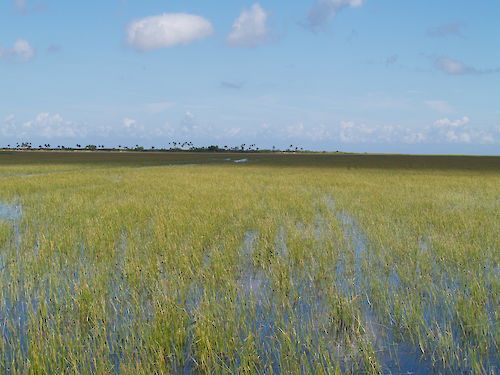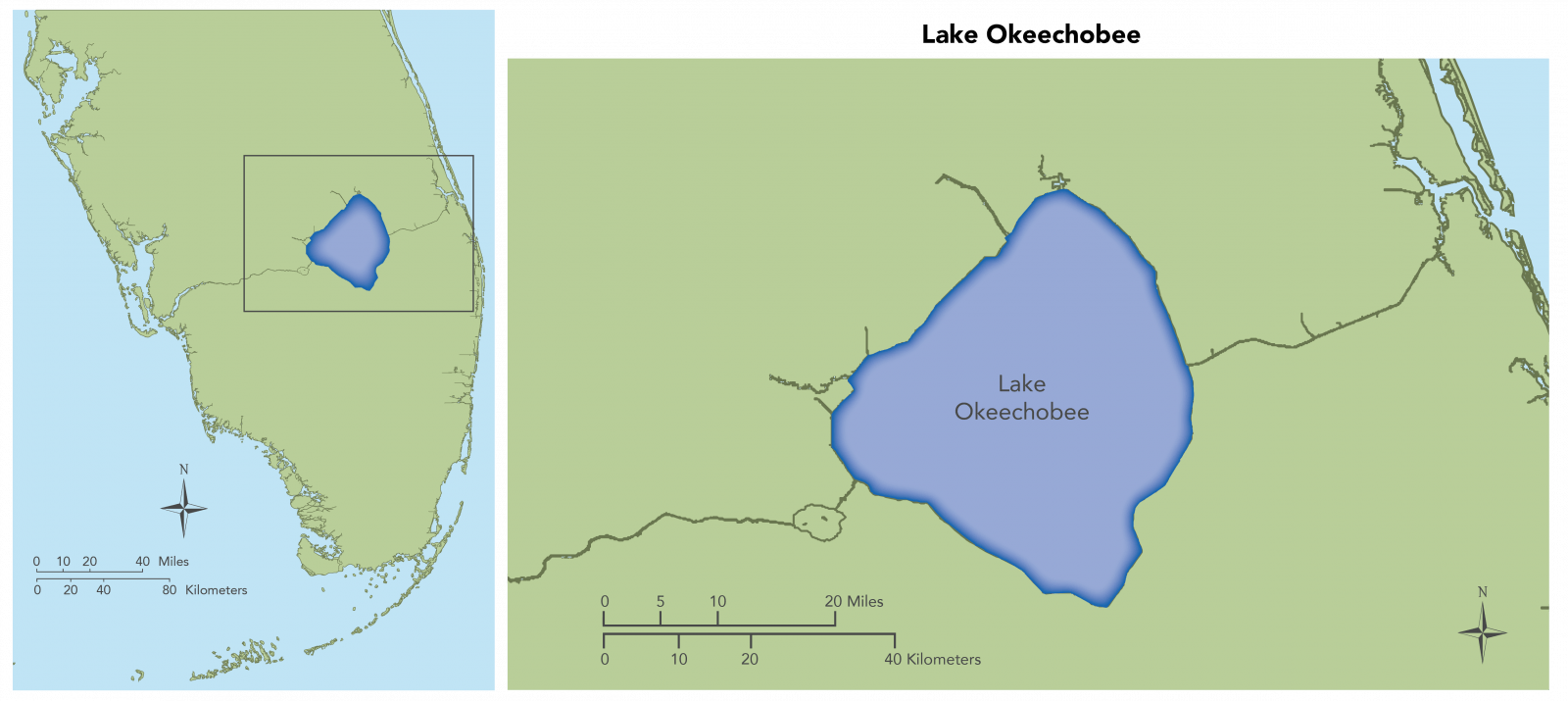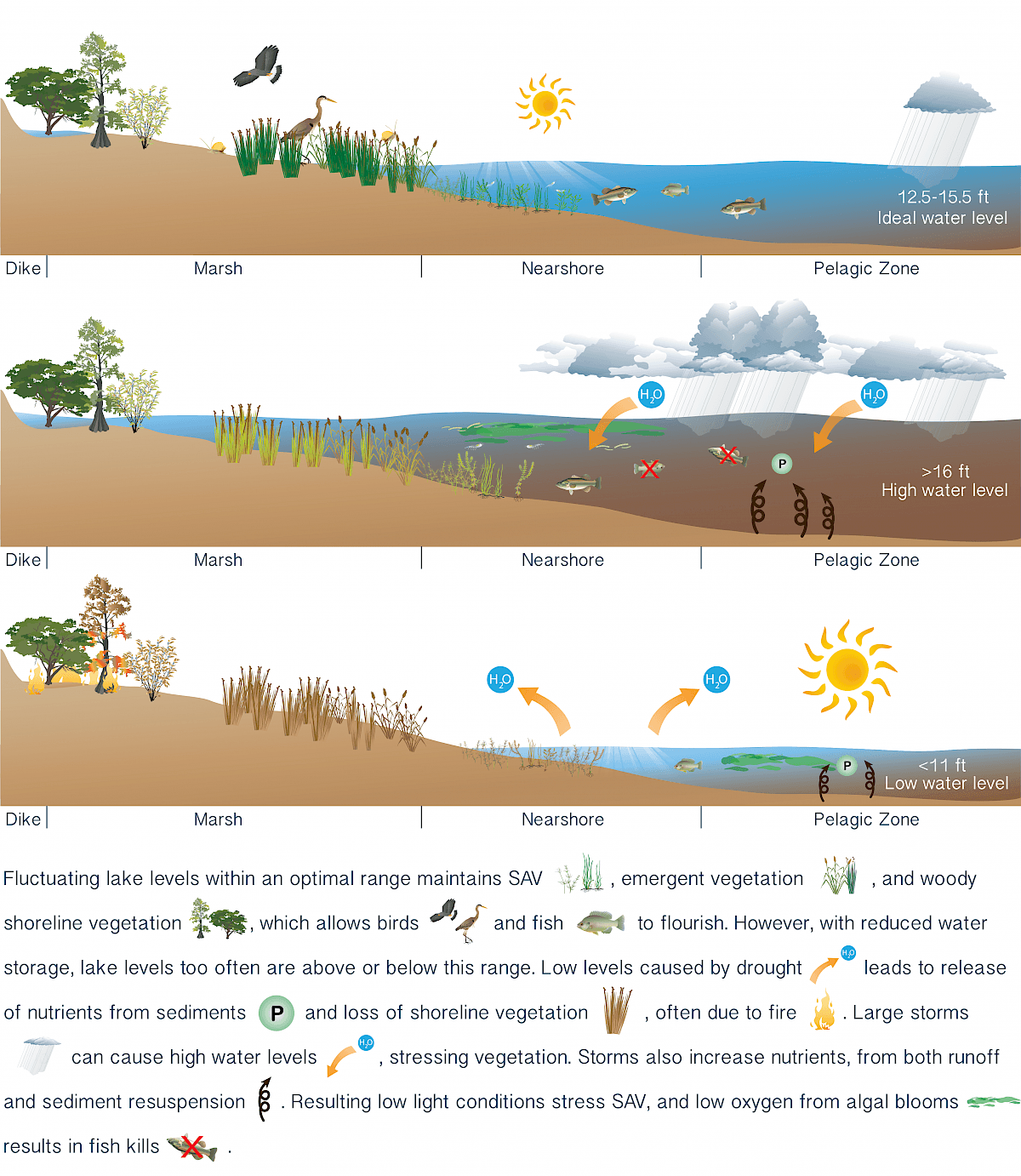Lake Okeechobee
Lake Okeechobee is a large, shallow, eutrophic lake located in central south Florida. The natural shoreline, inflow, and outflow of the lake was altered by the construction of the Herbert Hoover Dike and associated water control structures and watershed drainage features, and nutrient inputs have caused excessive cultural eutrophication over many decades. As a result, water levels within the lake fluctuate with increased frequency and amplitude, and vast quantities of nutrient-laden sediments have accumulated in deeper areas which are easily resuspended by even moderate winds. This has caused Lake Okeechobee to become increasingly turbid and has served to exacerbate water-column nutrient concentrations upon their release from the sediment. Further, excessive nutrients and fluctuations in water levels favor invasive species, displacing large areas of marsh with non-native or native nuisance vegetation, lowering habitat quality and increasing management costs. These three issues, water quality, water levels, and exotic species are considered the primary threats to lake ecology. (Photo of Lake Okeechobee by SFWMD used with permission)
Return to Regions Main Page

